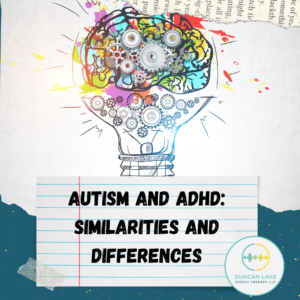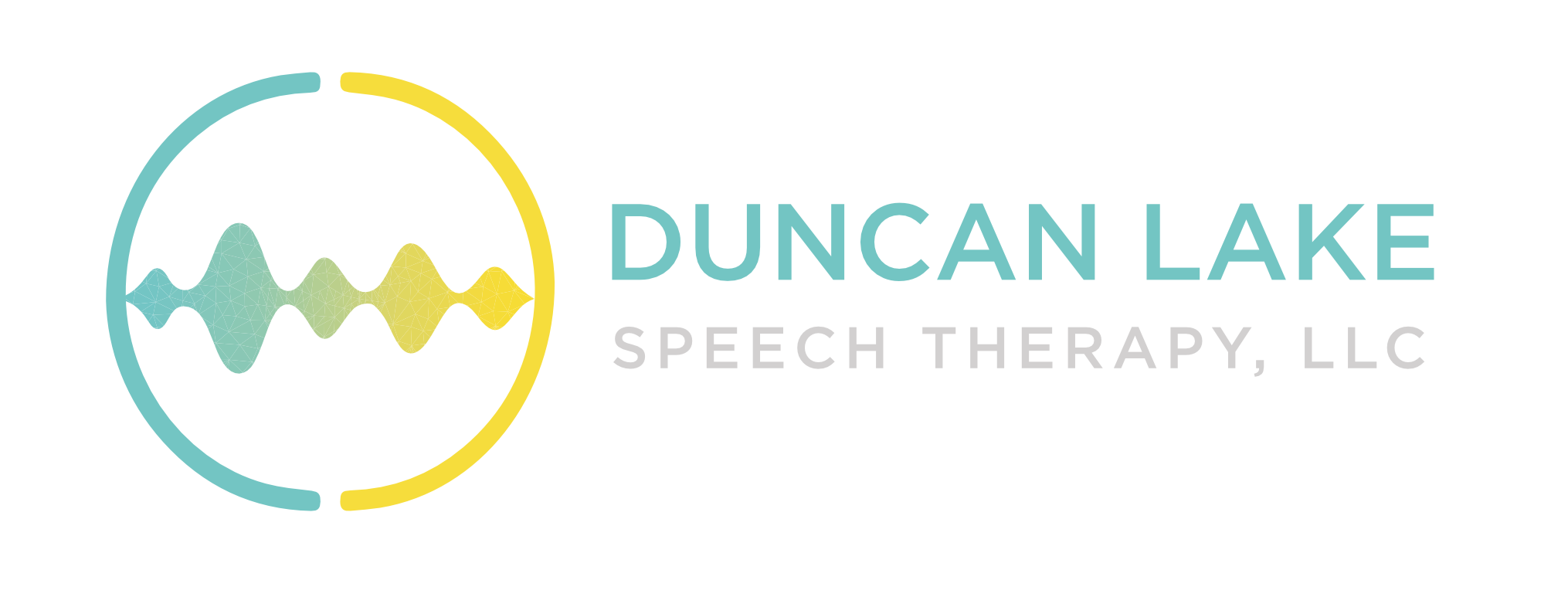by Hannah Blackwell, M.A., CCC-SLP
Duncan Lake Speech Therapy
Autism and ADHD share many similarities, sometimes making it difficult to distinguish between the two. Today, we’re going to take a look at the documented similarities and differences between these two diagnoses.
Clinical Definitions
Autism is a neurodevelopmental disorder characterized by deficits in neurotypical social interactions/communication and restricted and repetitive interests/behaviors. ADHD is also a neurodevelopmental disorder and is characterized by a pattern of inattention, hyperactivity, and/or impulsivity that interferes with neurotypical functioning. These definitions provide a written difference between the two disorders, however they do not fully encompass all of the traits associated with Autism and ADHD.
Traits and Characteristics
Dr. Megan Ann Neff, a psychologist diagnosed with both Autism and ADHD, shared many similar and differentiating characteristics of Autism and ADHD, which are compiled below (and featured in a post here):
Both Autism and ADHD have social differences, making it more difficult to engage in and interpret social interaction with their neurotypical peers. People with ADHD and Autism often mask, which is a term referring to someone intentionally or subconsciously suppressing themself in order to blend in with the people around them.
They also both have sensory differences relating to how the brain processes and interprets sensory input. Both have difficulties with interoception, which is the body’s ability to sense internal signals related to things like hunger, thirst, and emotional regulation.
Impulsivity, lack of focus, and executive functioning difficulties are also shared between Autism and ADHD. Impulsivity may include things like interrupting, lack of focus may be due to internal or external events, and executive functioning includes organization and time management skills.
As we can see, there are a lot of shared experiences between Autism and ADHD, which makes it difficult to differentiate. While there are many similarities, there are also some differences to consider. Some differences have to do with the cause of the given characteristic. For example, both ADHD and autistic people have social differences. For Autism, this is caused by difficulty intuitively interpreting social cues, whereas with ADHD, people have a hard time interpreting social cues due to reduced focus and attention. Another large difference is that people with ADHD often have a desire for new activities and new experiences, whereas Autistic people often find comfort in repetitive behaviors and routines.
Conclusion
As we can see, there is much more overlap between ADHD and Autism than one may expect, and sometimes, the two are co-occurring. It is important to remember, however, that the characteristics listed here are not true for every ADHD or Autistic person; each person’s experience is unique and individual.
References:
American Speech-Language-Hearing Association. Autism spectrum disorder. https://www.asha.org/practice-portal/clinical-topics/autism/
Miller, D., Rees, J., & Pearson, A. (2021). “masking is life”: Experiences of masking in autistic and nonautistic adults. Autism in Adulthood, 3(4), 330–338. https://doi.org/10.1089/aut.2020.0083
National Institute of Mental Health. (2023). Attention-deficit/hyperactivity disorder. https://www.nimh.nih.gov/health/topics/attention-deficit-hyperactivity-disorder-adhd
Neff, M. A. (2024). ADHD or autism?. Insights of a Neurodivergent Clinician. https://neurodivergentinsights.com/misdiagnosis-monday/adhd-vs-autism
Rudy, L. J. (2023). Autism vs. ADHD: What are the differences?. Verywell Health. https://www.verywellhealth.com/autism-vs-adhd-5213000




Recent Comments